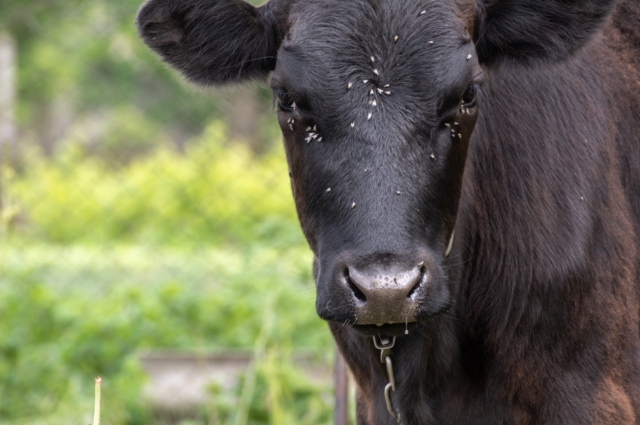by Loyd Leon
In the vast landscapes of American agriculture, where cattle ranching stands as a symbol of prosperity and tradition, a tiny but formidable adversary lurks. Cattle flies, a diverse group of blood-feeding pests, pose a significant threat to the well-being of livestock, impacting not only their health but also the overall productivity of the industry. This article delves into the effects of cattle flies on the US cattle population and explores effective management strategies to mitigate their impact.
Understanding the Culprits
Cattle flies encompass a variety of species, with the most common being horn flies, face flies, stable flies, and heel flies. These tiny insects can cause considerable stress and discomfort to cattle, leading to reduced weight gain, lower milk production, and compromised reproductive performance. The economic implications of infestations are substantial, making it crucial for ranchers to implement proactive measures.
Effect on Cattle Health
Horn flies (Haematobia irritans) are perhaps the most notorious among cattle flies, inflicting pain and irritation by feeding on blood. Large populations can lead to anemia, particularly in calves, hindering their growth and overall development. Face flies (Musca autumnalis) are carriers of the bacteria responsible for pinkeye, a highly contagious and debilitating eye infection that can spread rapidly within a herd.
Stable flies (Stomoxys calcitrans) are no less troublesome, as they feed on the blood of cattle and cause painful bites, leading to reduced feeding time and increased stress. Additionally, these flies are vectors for various diseases, posing a dual threat to both the individual animal and the herd as a whole.
Managing the Menace
Given the multifaceted impact of cattle flies, effective management strategies are imperative to ensure the well-being of the herd and the sustainability of the cattle industry. Here are some proven approaches:
Integrated Pest Management (IPM): Implementing an IPM approach involves a combination of biological, chemical, and cultural control methods. This holistic strategy aims to minimize the reliance on chemical insecticides, promoting sustainable and environmentally friendly practices.
Fly Control Products: Insecticides specifically formulated for cattle fly control play a pivotal role in managing infestations. Pour-on, spray, dust, and ear tags are common delivery methods, each with its unique advantages. Regular application, particularly during peak fly seasons, helps keep populations in check.
Pasture Management: Rotational grazing and proper pasture maintenance contribute significantly to fly control. Since many cattle fly species thrive in manure, removing and properly disposing of manure can reduce breeding sites. Additionally, rotating grazing areas can interrupt the fly life cycle, hindering their ability to establish large populations.
Breeding Season Timing: Strategic timing of breeding seasons can disrupt the life cycle of cattle flies. Coordinating calving and breeding schedules to avoid peak fly activity helps protect vulnerable calves from the negative effects of infestations.
Genetic Selection: Some cattle breeds exhibit natural resistance to certain fly species. Selective breeding for resistance traits can contribute to building a more resilient and less susceptible herd over time.
In the heartland of American agriculture, where the livelihoods of many depend on the success of cattle ranching, the battle against cattle flies is an ongoing challenge. By understanding the nuances of these pests and implementing comprehensive management strategies, ranchers can safeguard the health and productivity of their herds. As the industry evolves, a commitment to sustainable practices and innovative solutions will be key to ensuring a thriving future for American cattle ranching, free from the constraints imposed by these persistent adversaries.












